It could have been so much worse… red foxes, Patagonian foxes, mongooses (or should that be mongeese?) – even badgers were proposed as a solution to New Zealand’s rampant rabbit problem back in the late 1800s. One entrepreneur actually thought burrowing owls might sort the rabbits out.
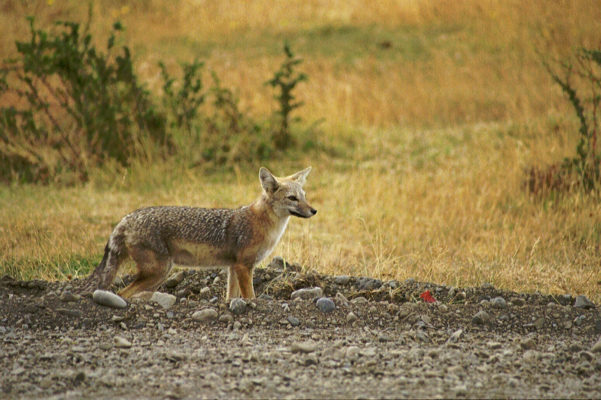
Prof Carolyn King from Waikato University uncovered some epic stories of serious proposals to import a suite of mammal predators into New Zealand, when she was researching the history of some of those we did get – stoats, weasels and ferrets. Her findings have just been published online by the Royal Society of New Zealand and should be available in their print journal soon.
The proposals show just how desperate the big landowners were to deal to the ‘rabbit nuisance’. Some plans were well advanced before being halted. A pair of tame red foxes and a number of mongooses actually did make it to New Zealand. Fortunately for our wildlife, they failed to establish.
“In the mid-late nineteenth century, massive pasture damage by introduced European rabbits began seriously to threaten the viability of pastoral farming and its major export product, wool. The worst of their effects were confined to the dry grasslands of the eastern North and South Islands, but they disturbed the whole colonial economy. Colonial authorities and private individuals searched the world for more and better ways of killing rabbits.”
They looked to the rabbit’s natural predator back in the UK – hence the importation of ferrets, stoats and weasels in there thousands. But the proposals didn’t end there.
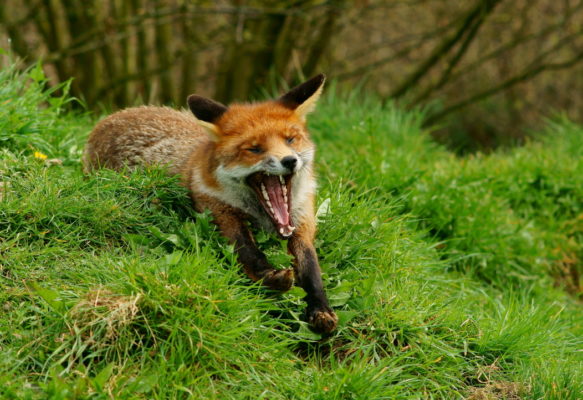
“The Lyttelton Times of 25 October 1864 refers to three foxes being sent to New Zealand on the ship William Miles, consigned to a Mr Charles Prince. Of the three, one vixen got loose and jumped overboard, but the remaining dog and vixen arrived in ‘excellent health’. These may have been the same animals mentioned by the Lyttelton Times of 6 January 1866 for which John Scott Caverhill of Hawkswood was granted permission to ‘retain possession of foxes’ on his property provided they be held in captivity. Another report in the Daily Southern Cross of 12 February 1873 commented that ‘not long ago’, someone imported a pair of foxes into Canterbury, which ‘fortunately died without issue’.”
Forewarned by the Australian experience where foxes were found to dine on lambs as well as rabbits, any further importations were banned by the New Zealand Government. We returned the favour by warning our Australian neighbours of the consequences of importing stoats and weasels. Hence Australia has a fox problem, but don’t have to deal with stoats. The Southland Acclimatisation Society was, however, still keen on importing foxes as the ‘rabbit menace’ continued to grow.
“The Southland Acclimatisation Society declared that it would ‘recommend, and will encourage by every lawful means’ the importation of foxes as potential rabbit control agents (Anon 1880). The society’s intentions provoked howls of outrage from ‘cockies’ (farmers), one of them expressing deadly serious opposition to the proponents of this ‘insane idea’ in some colourful and entertaining language. ‘Is there any possible operation, surgical or otherwise, by which a glimmering of common sense could be let down into the dark cavities of their empty skulls?’ he asked.”
Further proposals followed.
“Almost no predatory mammal or bird known to Northern Hemisphere farmers escaped consideration for translocation to New Zealand at one time or another. Some proposals were based on the flimsiest or downright false evidence, for example that the badger (Meles meles) ‘is perfectly harmless and inoffensive, and at the same time an indefatigable destroyer of rabbits’ (Mackenzie 1876)… During the late nineteenth century the idea of introducing the mongoose to kill rabbits was seriously considered to the extent that two actual liberations are known, probably the Indian grey mongoose (Herpestes edwardsi) and/or the closely related small Asian mongoose (H. javanicus auropunctatus).”
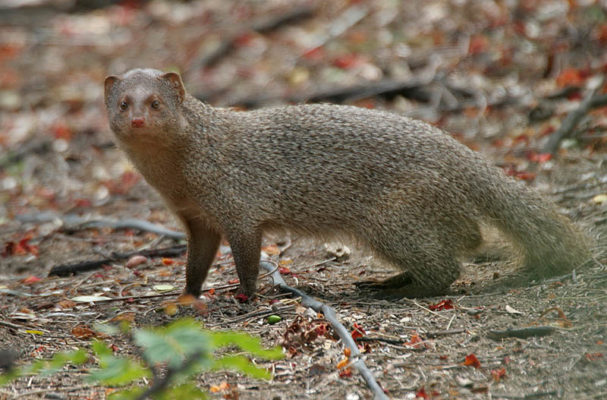
Southland was the site of some of the earliest rabbit releases – and also the first known mongoose release.
The Dunrobin run was inland from Riverton and worked by a pair of brothers, W.H. and C. Basstian. A newspaper of the time published a notice that:
Fifteen mongoose from India arrived here by the Ringarooma on Sunday, to the order of Mr C Basstian, of Dunrobin. They have been imported as rabbit destroyers.
The pros and cons of importing mongoose continued to be debated with economic benefits extolled and Jamaica’s import of the mongoose to combat rats in the sugar-cane fields given as a shining example. Others argued about the menace to poultry, but the menace to native wildlife doesn’t seem to have been a major consideration. The Government were eventually persuaded that the mongoose could cause more problems than it solved and the official investigation into its import ended. But that wasn’t the end of the mongoose story.
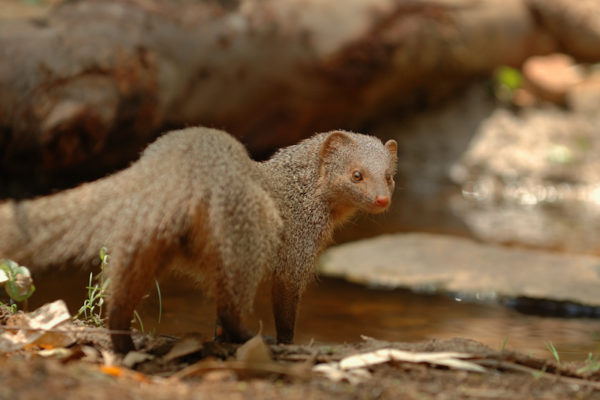
“Mongooses make good pets, and in India tame mongooses are kept to control rodents, much like house cats. There were no regulations to prevent those civil servants and East India Company staff, who chose to migrate with their households and staff to New Zealand, from bringing their pet mongooses with them. Years later, an unknown number of individuals of, probably, the Indian grey mongoose were imported into New Zealand by a retired Indian Army officer, who had a farm and menagerie in the Wangapeka-Tadmor district. Escaped or released mongooses were sighted in the wild on three occasions at Glenhope in 1912, and in the Clark River valley between 1914 and 1918. There were also unconfirmed reports of mongooses in the Sherry River–Hope Range areas until 1920. They presumably died out, but not before some had dispersed 20 km or more.”
Another proposal was put forward to import pine martens to New Zealand to control rabbits – despite the fact that pine martens are large, forest-dwelling, arboreal predators that eat many birds. A British entrepreneur living in Chile, Donald McCaskill, offered to bring 80 or 90 fox-like predators to New Zealand (probably Patagonian foxes). His offer was declined – as was the offer of Mr T.G. Pudan of Glasgow to send a number of Scottish wild cats.
So what about a ‘cat’ from closer to home – the Tasmanian native cat or eastern quoll?
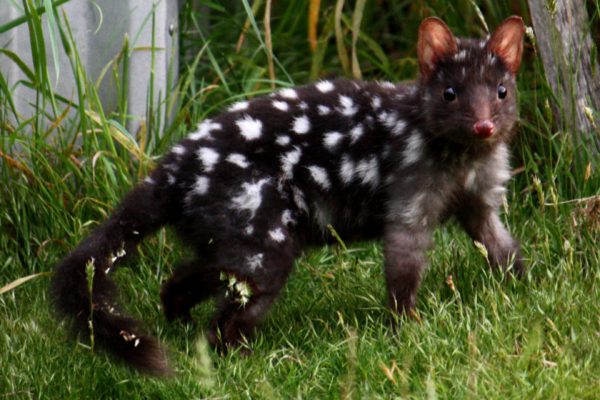
“In 1882 the New Zealand Herald heard that Sir George Grey had recently charged some members of the government with contemplating the introduction of the Tasmanian native cat (the eastern quoll) to help with destroying rabbits. An editorial commented that:
[T]he Tasmanian cat, though small, is a fierce creature, and would be dangerous to children. The rabbit is a costly trouble, but it will not do after all to pay too high a price for his removal.
…Really it is time that our zoological experiments were placed under some system of special, regulation (Anon 1882).
Some sensible advice at last!
Mistakes were made – and we’re still struggling with the consequences, but Prof King says it’s unfair to blame the Acclimatisation Societies of the 19th Century.
“Nineteenth century Acclimatisation Societies are often criticised for their ill-advised importations, especially those of any species that might attack rabbits. In fact, most of the provincial societies, except Southland, had always been against the introductions of any alien predators. The real responsibility lay with the Colonial Government and its wealthy supporters, for reasons that seemed valid at the time.”
The Otago Acclimatisation Society voiced its protest, although its concern was more about game birds than native species.
“In 1909, the Council of the [Otago] Acclimatisation Society went so far as to declare the importations of ‘ferrets, stoats, and weasles…a disastrous mistake, owing to game being destroyed’. To contemporary eyes it is remarkable, even shocking, that the main concern of some settlers was still for their introduced game, rather than for native fauna. But it is important to understand the decisions and opinions of the past in the contexts in which they were made. We have to remember that, at that time, arguments based on conservation of native wildlife always ran a poor second to the colonial ambition to create a ‘Britain of the South’ complete with abundant game for shooting for everyman—although by this date, attitudes were slowly beginning to change.”
We can only wonder what New Zealand might have been like if no mammal predators had ever been introduced here. But, as Prof King has revealed, it could have been worse – much worse.
“Most of the species reviewed here would probably not have established anyway, but knowledge of the context suggests that our criticism of what colonial authorities did (and what we might also have done in their shoes) should become tinged with some appreciation of what they managed to avoid doing. Australia admitted foxes and domestic ferrets from early days, but (on New Zealand advice) refused stoats and weasels; New Zealand prohibited foxes just in time, but imported ferrets, stoats and weasels in large numbers. History explains each country’s choices, and it remains debateable which was worse.”
The full article is published online in the Journal of the Royal Society of New Zealand. Only the abstract is freely available.

